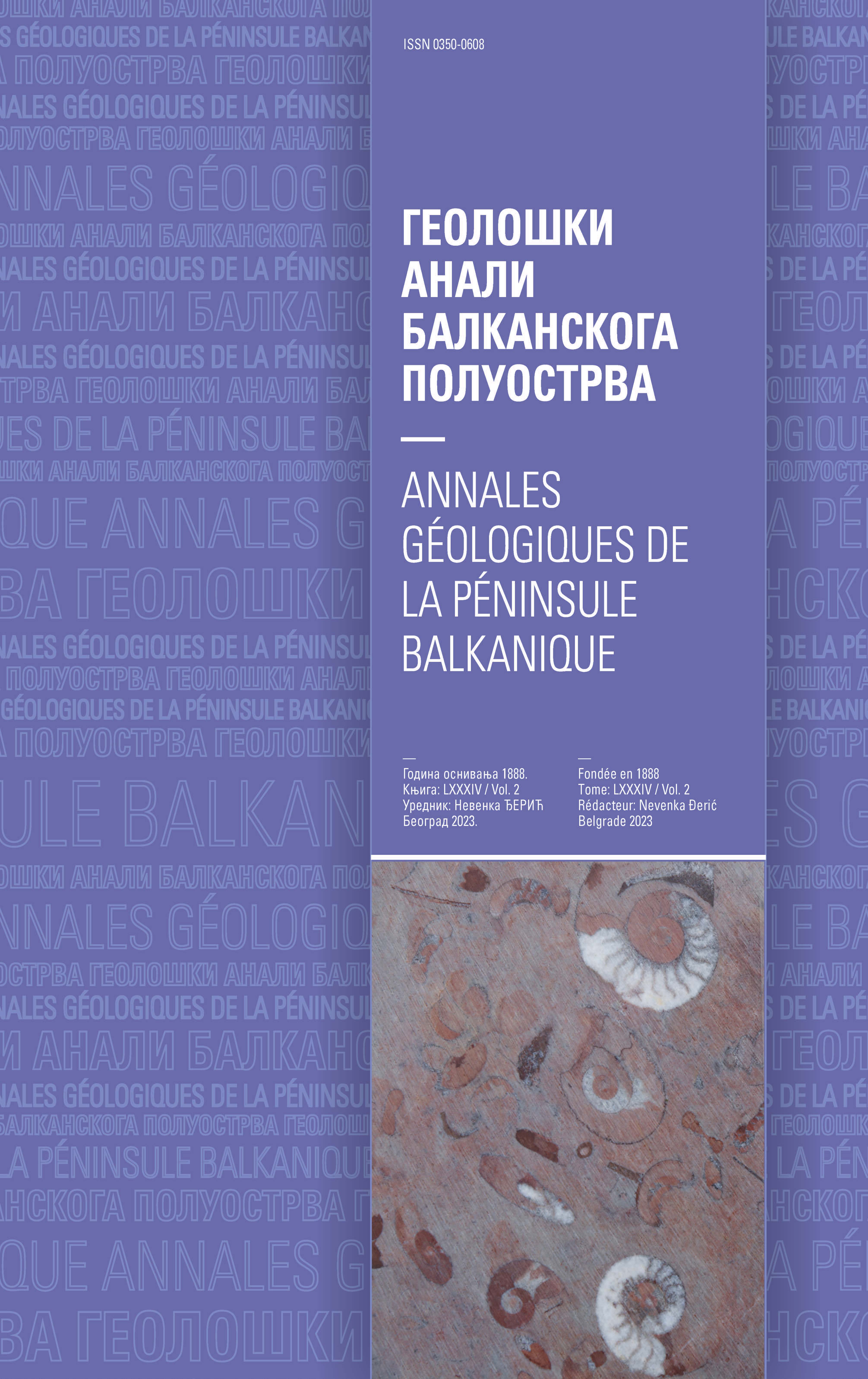Middle Miocene shark teeth from the southern margin of the Pannonian Basin System (Serbia, Central Paratethys)
Abstract
This paper describes Middle Miocene (Badenian) shark teeth from Serbia and discusses their geographical distribution at other localities of the Central Paratethys. The shark teeth originate from Višnjica (near Belgrade), from Višnjica Clay, or the ‘Pleurotoma Clay’. The variety of sharks is very low, but according to these fossils Višnjica is the richest among Serbian localities. The sharks teeth reported in the paper belong to the following taxa: Otodus (Megaselachus) megalodon (AGASSIZ, 1835), Hemipristis serra AGASSIZ, 1835 and Odontaspididae indet. The high diversity of invertebrates (molluscs, echinoids, corals etc.) and other coeval fossil assemblages indicate a warm period (the Middle Miocene Climatic Optimum), which preceded the Middle Miocene Climatic Transition.
Copyright (c) 2019 Geološki anali Balkanskoga poluostrva

This work is licensed under a Creative Commons Attribution 4.0 International License.









